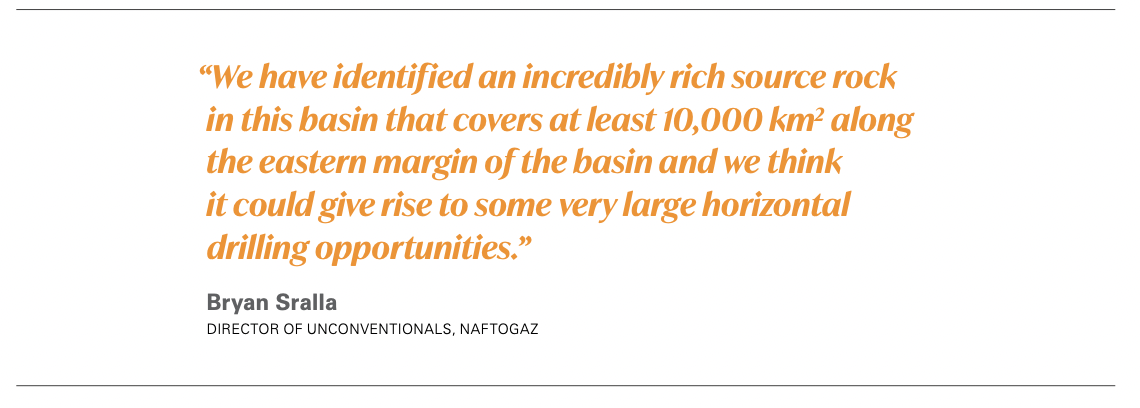High ambitions [Gas In Transition]
Ukraine’s ongoing war with Russia – now into its fourth month – has put much of its natural gas infrastructure at risk, but the country’s new ambassador to Canada and executives of its national oil and gas company believe the country can help the rest of Europe end its reliance on Russian energy.
At a morning panel on the second day of the Global Energy Show in Calgary June 8, Yulia Kovaliv, just days into her assignment as Kyiv’s envoy in Ottawa, said Ukraine’s energy sector has been severely impacted by the war.
Supply chains, particularly for diesel fuel, have been significantly damaged, she said, and repeated missile strikes have destroyed the country’s largest oil refinery.
Ukraine stopped importing natural gas from Russia in 2015, and is now leading EU efforts to reduce reliance on all forms of Russian energy, including natural gas, which prior to the war met about 40% of Europe’s natural gas demand.
“We do call to stop the operations in the Russian energy sector, because this is the biggest sector that fuels Russia’s war against Ukraine, fuels the ability of Russia to finance the war,” Kovaliv said.
But ending European reliance on Russian natural gas is not Ukraine’s end game, she added. Ukraine, with substantial natural gas infrastructure in the Carpathian basin in the west and the Dnieper-Donetsk basin in the east, was once the source of a majority of Soviet-era natural gas supplies.
Gas for Europe
Now, it wants to rebuild that position as a major source of natural gas, but to supply Europe, not feed the Russian military and industrial machine, Kovaliv said.
“Ukraine’s natural gas reserves provide the opportunity to boost production not only for domestic markets but also for export to the EU,” she said. “This is another way to support Ukraine.”

The EU’s plan to provide €300bn of emergency funding to help break Russia’s energy hold on Europe, and €10bn specifically for new LNG projects, now is an ideal time for Canada to widen its investments in the European energy market, Kovaliv said.
“We now believe that European markets are now open for new entrants in all sectors of energy supply,” she said. “Canadian companies should take this opportunity to enter and expand into the EU market. This will also help Ukraine to block Russian from the billions of energy flow that is helping Russia fund the war.”
Remarkably, Ukraine’s natural gas production, which averages about 13bn m3/year, is down only about 6% from pre-war levels, despite the fact that many production facilities are behind or close to front lines in the east, according to Oleg Tolmachev, director of exploration & production at Naftogaz, Ukraine’s state-controlled energy company.
“We have production facilities that get shelled every day,” he told conference delegates. “People will get to shelter then come out and fix the wells, because they understand that if they don’t do it then the nation will suffer.”
Bryan Sralla, director of unconventionals at Naftogaz, said the Dnieper-Donetsk “super basin”, in the east part of the country and perilously close to front lines in the Donbas region, offers rich unconventional gas potential. Cumulative production in the basin is approaching 12bn barrels of oil equivalent (boe), 80% of which is natural gas, but so far, only conventional drilling technologies have been deployed, leaving behind much larger source rock resources.
“We have identified an incredibly rich source rock in this basin that covers at least 10,000 km2 along the eastern margin of the basin and we think it could give rise to some very large horizontal drilling opportunities – thousands of horizontal wells could be drilled, on the scale of some of the unconventional plays here in North America,” he told conference delegates.
Various geological interpretations of the basin suggest those source rocks could hold upwards of 14bn boe of undiscovered resources and as much as 3.4bn boe of prospective resources associated with identified drilling prospects.
Further south, the deep waters of the Ukraine sector of the Black Sea have not seen any exploration activity, but the geology there strongly suggests that the same hydrocarbon system that is present in the Turkish and Romanian sectors – where 30 trillion ft3 of natural gas resources have been discovered – extends into the Ukrainian sector.
Technology and dollars
“When you combine these resources together, Ukraine should be a natural gas exporter to Europe,” Sralla said. “The resources are here, not only to fulfill internal demand for natural gas but also to be a large supplier of natural gas to Europe.”
What’s missing, he said, is technology and investment. Although natural gas has been produced in Ukraine for more than 50 years, horizontal drilling and hydraulic fracturing are not yet part of the Ukrainian E&P sector.
“This is going to be a large part of unlocking the potential for unconventional gas,” he said. “In the Ukraine, we have an incredibly rich basin, very similar to the Western Canadian Sedimentary Basin, but no horizontal wells have ever been drilled – we are today at the stage Montney development was at 20 years ago.”



